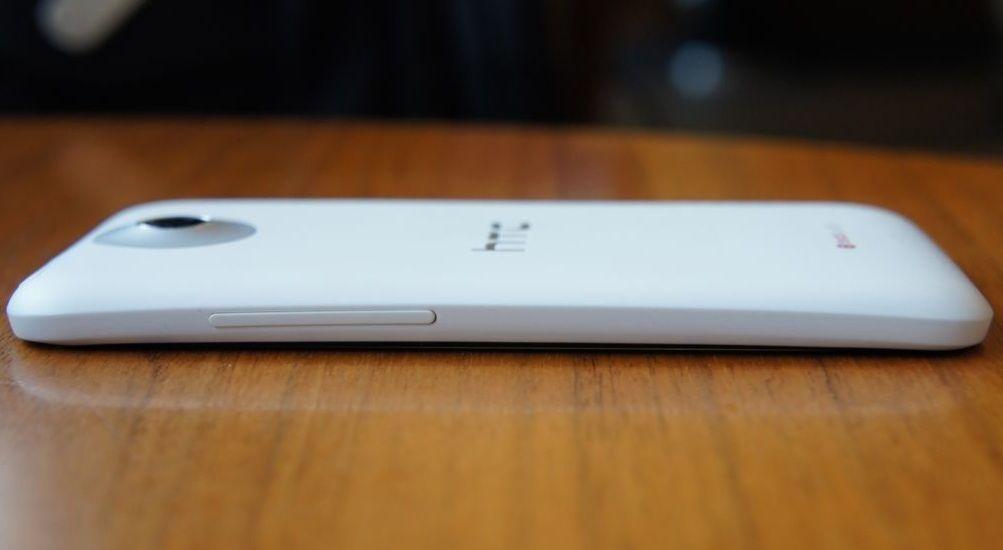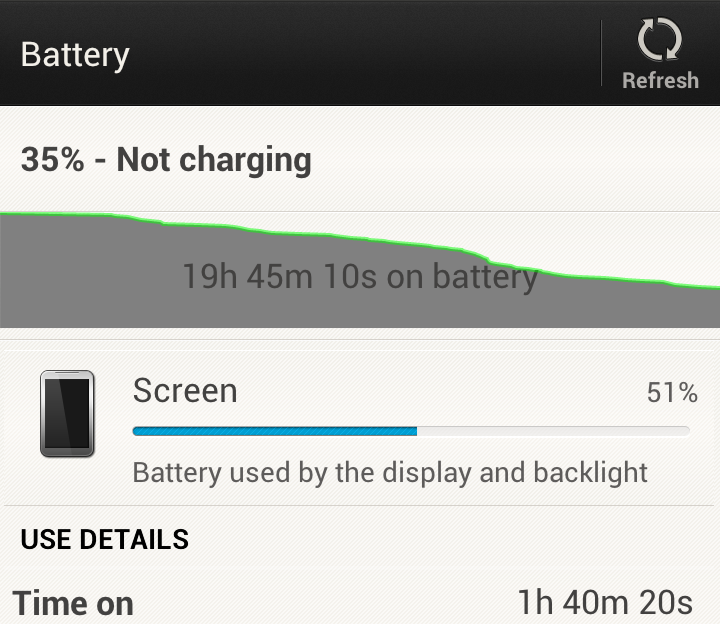
I have been using the HTC One X since just before noon on Sunday. For the time being (and for the foreseeable future), it has replaced the gigantic Galaxy Note as my primary device and is easily one of the best and most well-rounded mobile devices I have ever used. The device itself and display are absolutely gorgeous, the 1.5GHz dual-core S4 chip is unbelievably fast and Sense 4 is surprisingly refreshing to use. From top to bottom, it's a high-quality handset – easily one of the highest quality handsets to date.
That said, no device is perfect, and the One X is no exception. It's an extremely solid device that I'm very happy with, but there is one tiny thing I would change: the battery.
To be fair, the battery life on the One X isn't necessarily bad. (It isn't necessarily great either.) The 4.7-inch 720p LCD display does a decent job of making sure your phone won't last too long on a single charge, but the power-saving Qualcomm S4 chipset compliments it quite well.
I've been lurking several different forums since Sunday and have come across some claims of pretty impressive stamina by One X (AT&T) users. Accompanying screen captures only add credence to the claims (20 or more hours unplugged with between three and five hours of screen-on time). However, my own experience with the One X battery has been a drastically different story. I can only manage to squeeze a day of light to moderate use (12 to 14 hours with two to three hours of screen-on time) out of mine before having to plug up again.

Update: Before I went to bed on Thursday night, I disabled an option (Best Wi-Fi Performance) in Advanced Wi-Fi settings that I forgot I had enabled, which was keeping the One X from sleeping. (The screen was still off but it was not entering a low-power state like it should.) After disabling that option, my standby time improved significantly -- from about 12 to 14 hours to over 20 hours. Standby time may be better now, but I still cannot manage to get nearly what other One X owners are claiming to get in usage time. My screen-on time was only one hour and 40 minutes with 35 percent charge left, versus three to four hours. Either way, the standby time increase makes lasting through the entire day much more manageable.
As I'm sure most know by now, however, the One X isn't like most Android devices. I can't just pop in a spare battery and keep on going. No, it's part of the newest fad among several Android device manufacturers: slimmer devices with non-removable batteries.
To cut as many square nanometers as possible, HTC chose to make all of the devices in the One series with integrated (non-removable) batteries. But my quarrel isn't with non-removable batteries; it's with the low capacity cells HTC saw fit to use. At the Frequencies conference held in San Francisco late last month, Bjorn Kilburn, HTC VP of product strategy, explained that HTC conducted some research, specifically centered around batteries. HTC alleges their research revealed that "consumers preferred thinner devices over those that traded that thinness for extra battery life," says our own Alex Wagner.
Clearly, I (and most the people who shared their sentiments on my article about the bogus, poorly worded statement) don't fit into their statistic. But the issue isn't exactly as cut and dry as HTC would like us to believe. In January, Motorola showed everyone that larger capacity batteries don't necessarily have to be significantly larger to hold a charge longer.
For comparison, the One X is 8.9mm thick and ships with a 1,800mAh battery and Sprint's EVO 4G LTE is also 8.9mm thick and comes with a slightly more respectable 2,000mAh battery. At 7.1mm thick, the Motorola DROID RAZR on Verizon Wireless is nearly 2mm thinner than both the One X and EVO 4G LTE, yet it touts a comparable 1,780mAh cell. And its larger sibling, the DROID RAZR MAXX, is roughly the same thickness as both HTC's devices (it's a negligible 0.1mm thicker) and touts a whopping 3,300mAh battery. That's very nearly double the capacity squeezed into approximately the same space.
Despite the polycarbonate body of the One X most definitely being thicker than the plastic casing of the RAZR MAXX, I fail to believe HTC doesn't have the technology to cram 3,000mAh or so in a casing similar to the size of the One X.
Larger batteries, like the one found in the DROID RAZR MAXX, aren't without their own problems, though. They can take up to twice the time to charge. And if you're charging a 3,300mAh battery on, say, 0.5 amperes, it can take several hours to fully charge. But the benefit far outweighs the charge time. As Aaron explains in his full review of the DROID RAZR MAXX, he failed to kill the battery in a single day, even with excessively heavy use – far more than he would ever use in a typical day. That being the case, most people would likely resort to charging the device in their sleep rather than throughout the day anyway.
I love the unibody design of the One X – it adds volumes to the solid, sturdy feel of the device. But if the battery were removable or notably larger (read: not just 2,000mAh), I would literally have zero complaints about this phone. I could simply order spare batteries and toss them in my bag for a midday boost. Instead, if I'm running low on power and I'm away from an outlet or open USB port, I will have to resort to a battery pack, like my Powerbag, which would take no less than two hours to fully charge.
Where do you stand on the issue, readers? Are you okay with the battery life on your HTC One device? Do you wish they were larger capacities? Or do you wish HTC had not integrated the batteries into the design at all and opted for removable batteries instead?